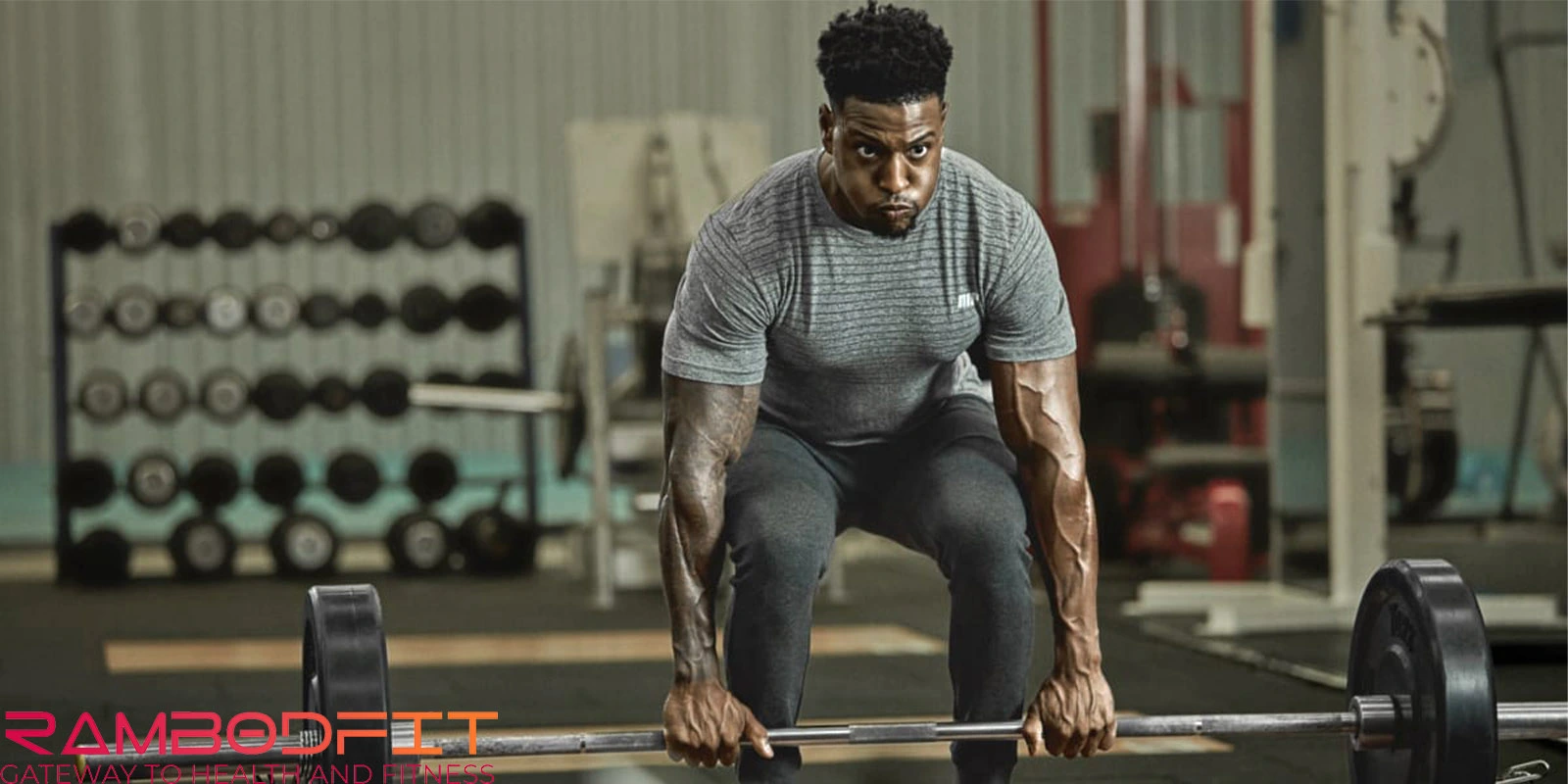


Leg day and fainting are infamous among gym-goers. Whether you’re grinding through heavy squats or burning out on lunges, it’s one of the most physically demanding workouts in any training routine.
But sometimes, the effort required to power through a tough session can lead to unexpected side effects, most notably, dizziness or even fainting. On Rambodfit, we will dive into this leg day and fainting subject.
If you’ve ever felt the room spin after a brutal leg press or found yourself lightheaded halfway through your routine, you’re not alone. In fact, it’s a fairly common phenomenon. Fortunately, it’s also one that can often be prevented by understanding the underlying causes and, just as importantly, by fueling your body the right way.
Table of Contents

Fainting, or nearly fainting, during leg workouts can be caused by several physical and nutritional factors. Let’s break down the most common culprits of leg day and fainting:
Leg muscles are large and demand a lot of oxygen and energy. During intense exercise, especially compound lifts like squats or deadlifts, a significant amount of blood is redirected to the lower body.
This can result in decreased blood flow to the brain, particularly if you’re pushing past your limits. Your body needs time and training to adjust to this level of demand, which is why progressive overload is so important.
This reflex reaction causes your heart rate and blood pressure to drop suddenly, reducing blood flow to your brain and causing you to faint. It can be triggered by a combination of physical strain and psychological stress (like fear of a heavy lift). This is often what’s happening when someone “blacks out” after a max-effort squat.
Skipping meals or not eating enough before your workout can lead to a drop in blood glucose. Your muscles rely on glucose for energy, and if your levels dip too low, dizziness and fainting can follow. Symptoms like nausea, weakness, and confusion may appear alongside the lightheadedness.
Even mild dehydration can reduce blood volume, which in turn can lower your blood pressure and lead to fainting. This is exacerbated by sweating and intense physical exertion.
While it’s a common lifting technique, holding your breath during exertion can lead to a rapid rise in intrathoracic pressure, followed by a sudden drop in blood pressure and heart rate when the breath is released, contributing to dizziness.
What you eat—and when—can significantly reduce your chances of leg day and fainting. Let’s walk through smart nutrition strategies that support energy levels, hydration, and blood sugar stability.

Timing and composition matter. Ideally, eat a balanced meal 2–3 hours before your workout, or a smaller snack 30–60 minutes prior if you’re short on time.
Best pre-workout meals (2–3 hours before):
Quick pre-workout snacks (30–60 minutes before):
The goal is to provide your body with complex carbohydrates for sustained energy, along with a moderate amount of protein and healthy fats. Avoid high-fat or high-fiber meals too close to training, as they may cause stomach discomfort.
Water is essential, but so are electrolytes—especially sodium, potassium, and magnesium. These minerals support nerve function and muscle contractions. Start hydrating early in the day and continue through your workout.
Hydration tips:
Caffeine-containing pre-workouts or coffee can have a diuretic effect, so increase hydration if you’re using them.
If you’re training intensely for over an hour, consider a simple carbohydrate source during your workout to maintain blood sugar levels.
Examples:
These help avoid mid-workout crashes, especially during high-volume leg day sessions.
After leg day, your muscles are depleted of glycogen, and your body needs nutrients to recover and rebuild. A balanced meal within 30–60 minutes of training will jumpstart recovery.
Great post-workout meals:
Make sure you’re also rehydrating and replacing any lost electrolytes to get along with leg day and fainting.

While nutrition is a huge part of the equation, other lifestyle and training habits can also help reduce your risk of fainting:
Here are some other useful articles about exercise and nutrition:
References:
Leg muscles are larger and require more oxygen and blood flow. The increased demand can lead to a drop in blood pressure and blood sugar, making you feel dizzy or nauseous, and make leg day and fainting more common.
While fasted workouts can work for some, leg day typically requires more energy. A small meal or snack before training helps maintain blood sugar and performance, or leg day and fainting may happen.
Yes, supplements like electrolytes, BCAAs, or even a small dose of carbs mid-workout can support hydration and energy levels. Avoid over-relying on stimulants like caffeine to stop leg day and fainting.